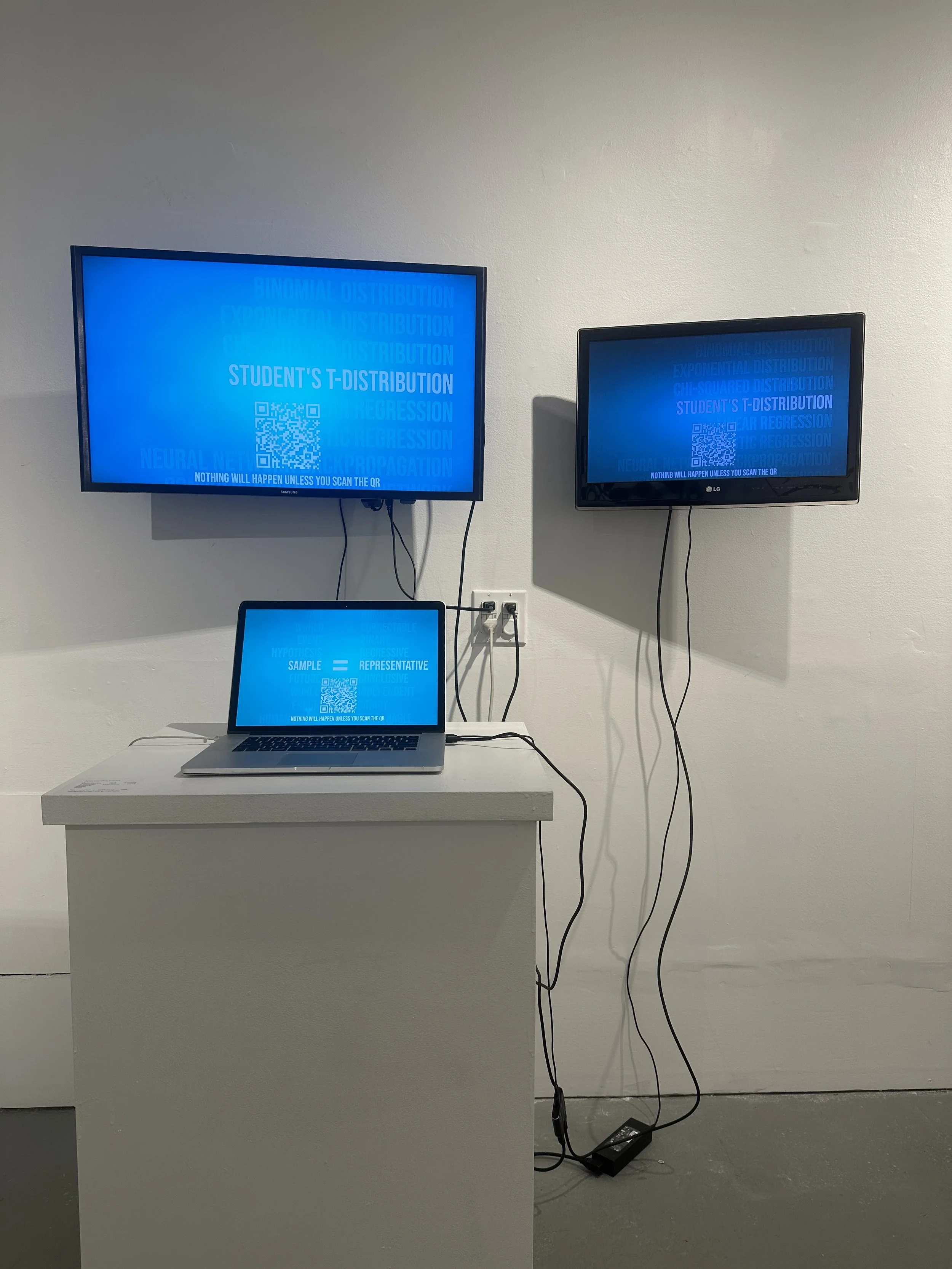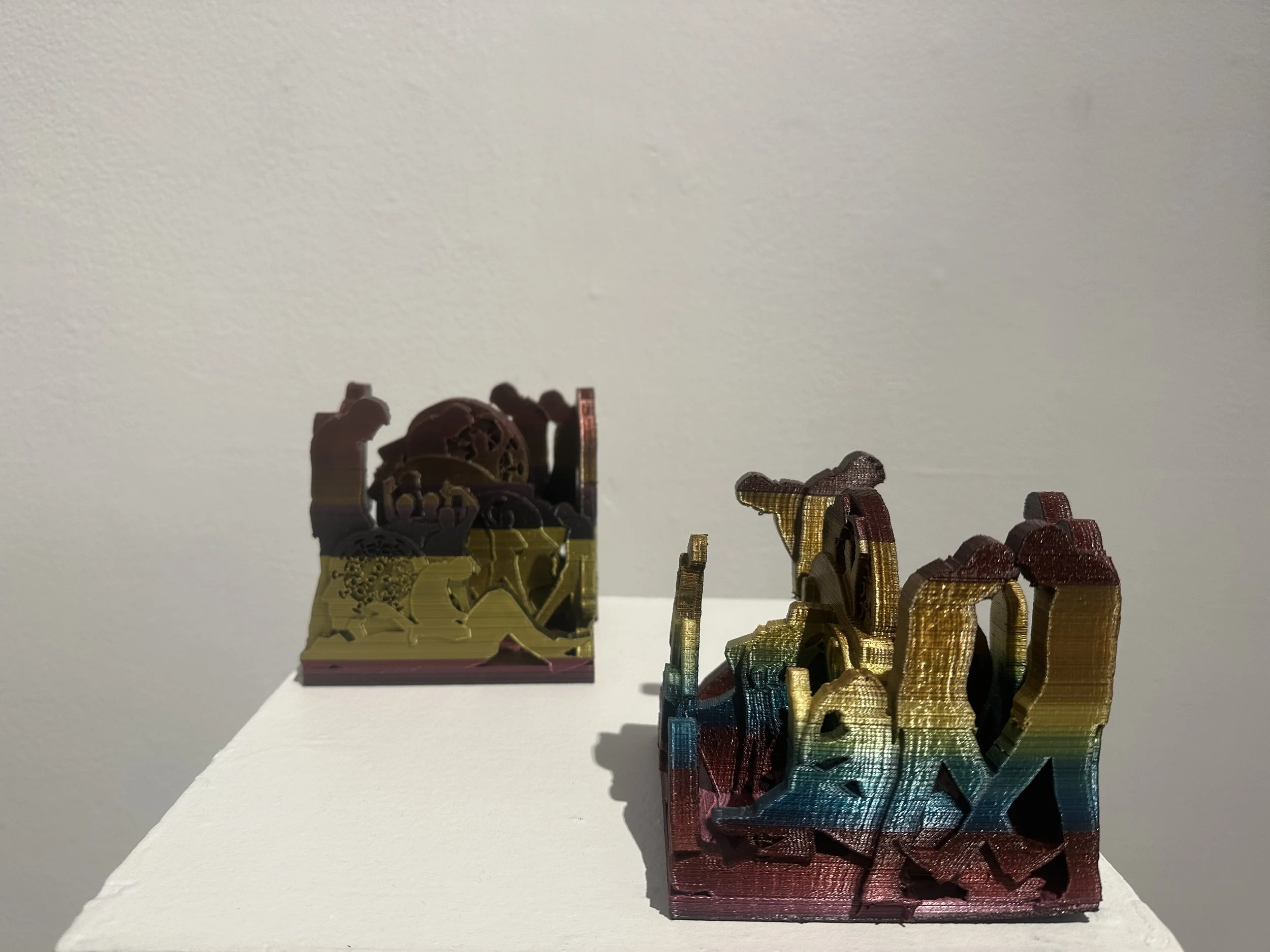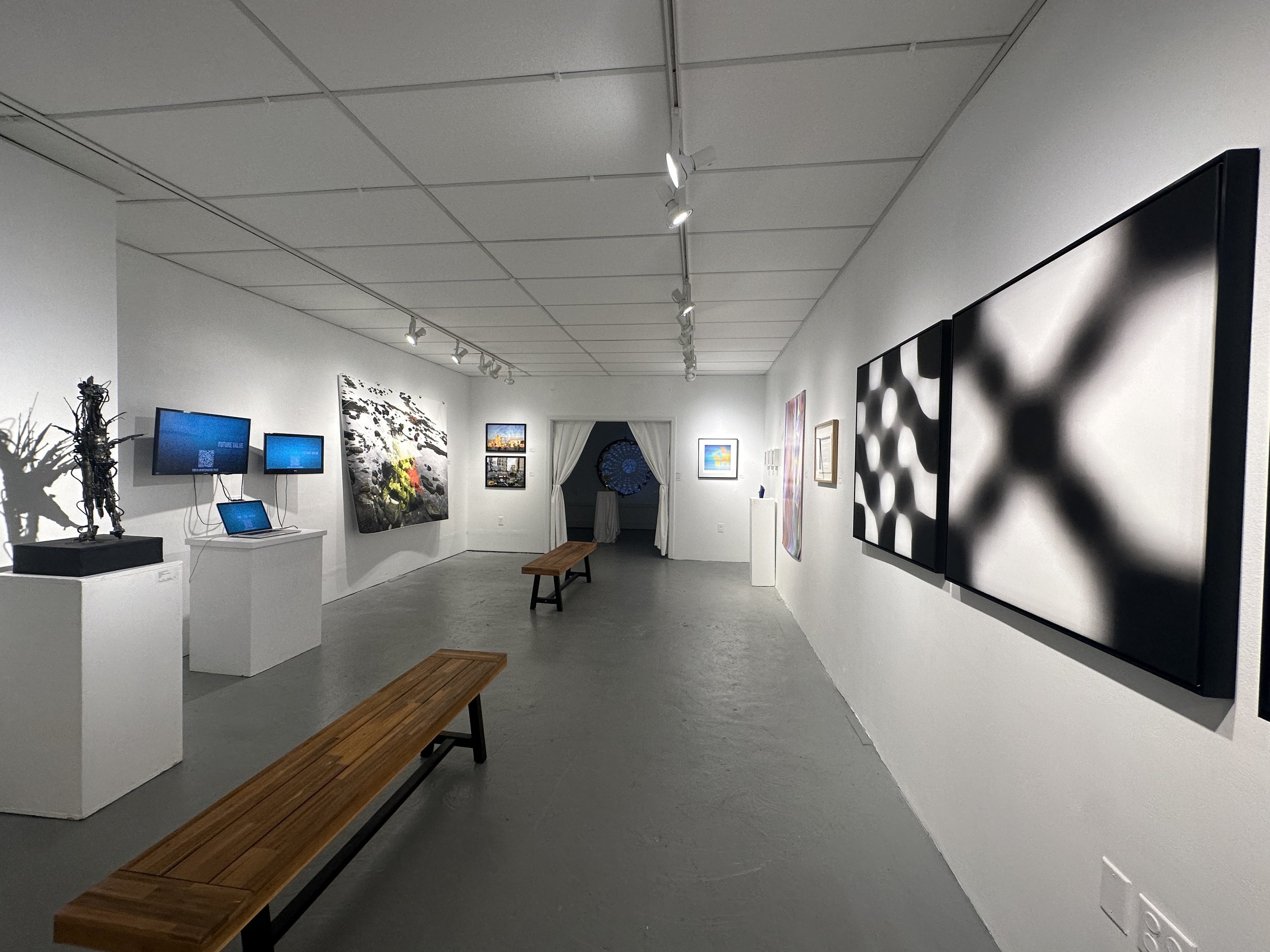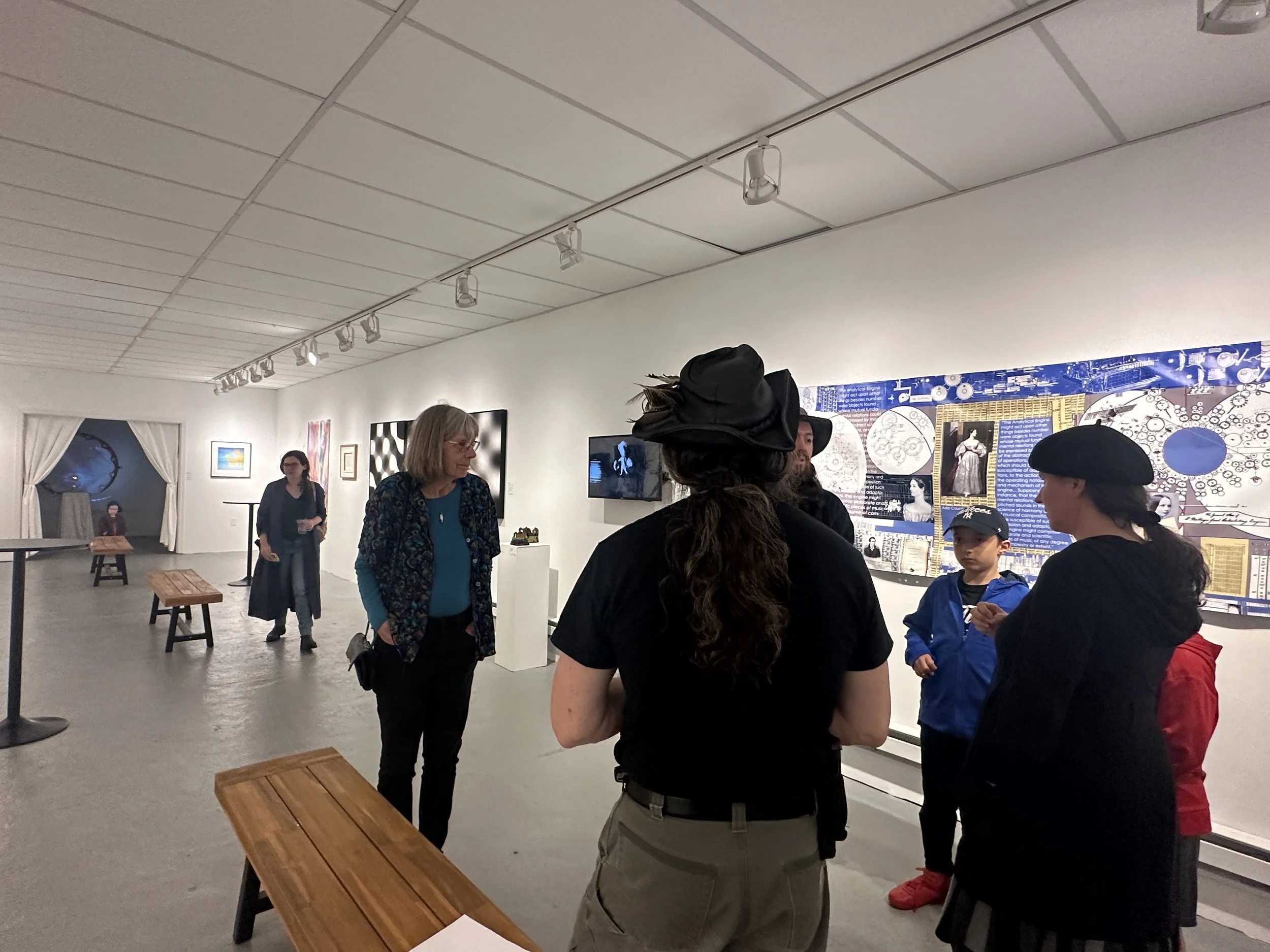Artist Statements are only visible on desktop devices. Please click on the image to read more from your desktop!
Juror Statement: It has been an honor to participate as a guest juror for Coding Creativity at Hera Gallery. The range of submissions was expansive in material and each elaborated on notions of coding and AI, exploring ideas surrounding computer-generated artwork and craft. The theme is incredibly timely considering the proliferation of AI as a tool, a resource, as well as a potential threat. How do cultural producers intuit the creative world through technology-supported images? As artists continue to push boundaries with technology, how do they understand the potential and limits of works generated with the aid of technology? The artists selected for the exhibition each demonstrate a dynamic approach to the subject of coding creativity, which can be seen in the exciting variety of material and scope of subject matter. Each artist has approached the topic in a unique way, leading to a rich visual lens in which to understand the world we live in. - Kate McNamara
Antonia Kimball
In order to articulate her personal experiences and further understand the complexities of what it means to be human, Kimball investigates the relationship between people and trauma, particularly cycles of abuse. In doing this, she explores the invisible mechanisms of the brain to address its interconnectedness with the body. This investigation has also led her to think through human adaptation to technology and its pitfalls. Using mixed media, she makes works about her past, present, and future. In her work Other Parts of the Body (2023), a mixed media artist book, she uses medical terminology to interpret how the brain recovers from trauma to highlight the brain-body connection in a highly personal narrative. In, Message Deleted (2023), a Claymation about cybernetics and the rise of the personal computer, she wants viewers to use their perception to consider how their senses have become, and are increasingly dependent on technology.
Kimball bases her work on the idea that our experiences guide our senses and how we interact with each other and ourselves. In her work she wants her viewers to reflect on how they engage with technology and interpersonal violence and the larger implications each have on our overall health. She asks us to question the kinds of relationships we have formed and envision what might happen if we don’t mitigate the negative effects of our dependencies that have formed. Ultimately, Kimball wants the viewer to think through what they consider abuse to be defined as and the multiple ways it manifests in themselves.
Mark Burchick
As we find ourselves speculating about the potential for AI to manifest into a new form of “non- human intelligence,” Noo Icons explores how our religious history has memorialized encounters with non-human intelligences."Noo" in the title refers to the Noosphere, a proposed evolutionary biosphere representing humanity's collective consciousness. Some have proposed the concepts of the internet, transhumanism, and artificial intelligence as representing this Noosphere.
The rear projected stained-glass window in this installation is produced using Deforum Stable Diffusion combined with DreamBooth, an open-source tool which allows users to further refine the training data used to produce these images. By creating an ethically sourced data set of photographs of Rose Windows from around the world, the continuously generating composite images produce an ethereal display of light and color. The altar piece is created using DreamFusion, a text-to-3D image renderer. The digital asset is then altered and 3D-printed in metallic gold plastic to suggest a monstrance, a housing for the “living presence” of Christ in the Eucharist wafer, or reliquary used to contain physical remains of the saints. In housing a lithium battery, the sacred nature of this rare-earth mineral which takes millions of years to naturally form is made central to the installation. Lithium not only serves as the physical backbone of AI technologies, suggesting the “living presence” of a new form of non-human intelligence, but it also is increasingly scarce. Current estimates suggest that we may be on track to exhaust the world’s lithium reserves by 2040.
Add discount code heragallery2023 for 25% off any release in music catalog!



































